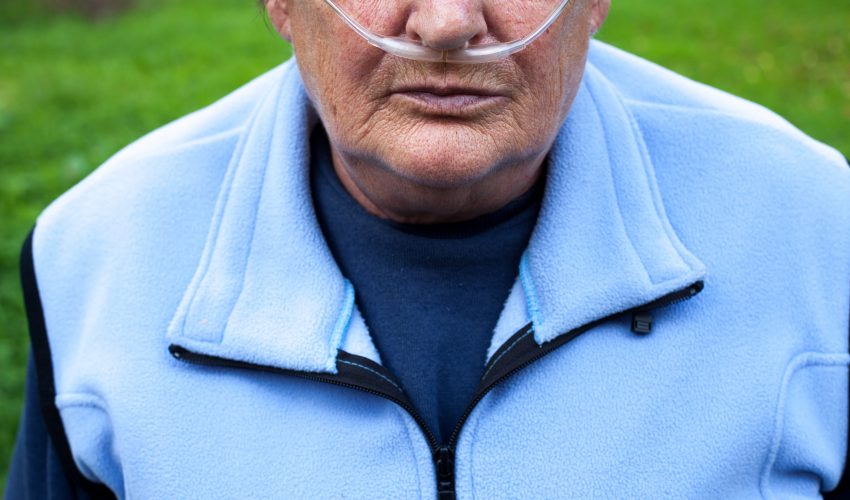Post Views: 2,994
ViewsCOPD: What You Need to Know
COPD, which stands for “Chronic Obstructive Pulmonary Disease”, refers to chronic airflow limitation in patients. In fact, COPD is known to be an umbrella term representing two different diseases: chronic bronchitis and emphysema. Today, this condition is found to be one of the major causes of death, as well as a disability around the world. This makes it important for nurses to know about this disease. It’s to be noted that the future holds more challenges when it comes to COPD. It has been predicted by health experts that this disease will turn out to be the third most common reason for death by the year 2020.
So, as nurses, each and every individual has the responsibility to know about this deadly disease in order to provide a better plan for healthcare to their patients in the coming days.
What is the role of nurses in COPD?
As mentioned above, this is a chronic health condition with a gradual onset. Most often, this disease is found to be affecting the elderly population with co-morbidities. In general, these co-morbidities would also require treatment and this could complicate the diagnosis and treatment of COPD. With the lack of time with physicians, there can be some inadequacies in the diagnosis, as well as the management of COPD. Also, the common people are not much aware of COPD and the co-morbid conditions involved. All of these make the role of nurses in COPD very important.
Although the role of nurses within the COPD management team could vary from clinic to clinic, it could include the following important things:
- Diagnosis
- Prescription
- Patient monitoring
- Evaluation of treatment success
- Alterations of treatment if required
Nursing Care Plans for COPD:
Firstly, the nursing care plans for COPD would involve the introduction of medications to the patients. In general, the COPD treatment regimen would aim at relieving symptoms and preventing complications. Most of the time, the patients with COPD receive treatment as outpatients, which is where the nurses should include a teaching strategy to help patients comply with the treatment. Also, it’s the duty of nurses to help people understand the nature of this disease.
Being a nurse, one should remember that nursing care for COPD patients should focus on the management of symptoms when maximizing the functionality. In addition, nurses should develop the teaching skills to improve self-care among the patients. In this line, nurses should refer the patients to appropriate community resources to help ensure the high-quality care.
When it comes to COPD nursing care plan, the nurses should be sure to include the family members of the patients in teaching. It’s because they have an important role to play in the patient care. By keeping this in mind, the nurses should educate the patient and his/her family members about the pathophysiology of the disease. Tell them how the lung changes in relation to the symptoms. Educate the patients and their family members to look for the usual symptoms and ask them to contact their healthcare providers whenever symptoms worsen. The nurses should also take it as their responsibility to reiterate the significance of infection control by regular hand washing and avoiding crowded areas.
As mentioned earlier, most COPD patients will take treatment as outpatients and hence, the nurses should provide them with sufficient education on the medications prescribed to them. While doing so, the nurses should inform the patients about the proper usage of inhaled drugs and their consequence for taking them. It’s important to educate the patients that proper usage will maximize the effectiveness of treatment when at the same time decreasing the likelihood of adverse events. Remember, the patients might not be aware of how to check the amount of inhaled medicines left out. As a nurse, she or he should tell them how to check them to see when they are running out of medication.
In the long run, nurses should stress the significance of getting their shots for influenza and pneumococcal vaccines. Also, they should be urged to quit smoking if they haven’t already.
Additional Roles to be played by nurses in COPD:
As a nurse, one could go an extra mile to help their patients in the management of dyspnea by teaching them the activities that decrease or control it. In this line, the nurses could teach their patients some breathing techniques, proper positioning, and some energy conservation techniques. More often, the patients with COPD have problems with their proper nutritional intake. Nurses can advise them to take small and frequent meals that are rich in proteins. Some patients would also need oxygen therapy. Nurses can teach such patients about the proper use of oxygen. Finally, nurses could also help patients in their psychosocial concerns. These patients can then be saved from the risks of depression and anxiety.
One comment on “COPD: What You Need to Know”
Leave a Reply
COPD: What You Need to Know
By nurseadvisorofficial
As nurses, each and every individual has the responsibility to know about this deadly disease in order to provide a better plan for healthcare to their patients in the coming days. Keep reading to learn more about what you should know about COPD.














I am not sure of the cause of COPD emphysema in my case. I smoked pack a day for 12 or 13 years, but quit 40 years ago. I have been an outdoor person all my adult life. Coughing started last summer producing thick mucus, greenish tint to clear. I tried prednisone and antibiotics, but no change. X-rays are negative, heart lungs and blood and serum chemistries all are normal. I have lung calcification from childhood bout with histoplasmosis. I am 75 years old and retired.My current doctor directed me to totalcureherbsfoundation com which I purchase the COPD herbal remedies from them ,they are located in Johannesburg, the herbal treatment has effectively reduce all my symptoms totally, am waiting to complete the 15 weeks usage because they guaranteed me total cure.